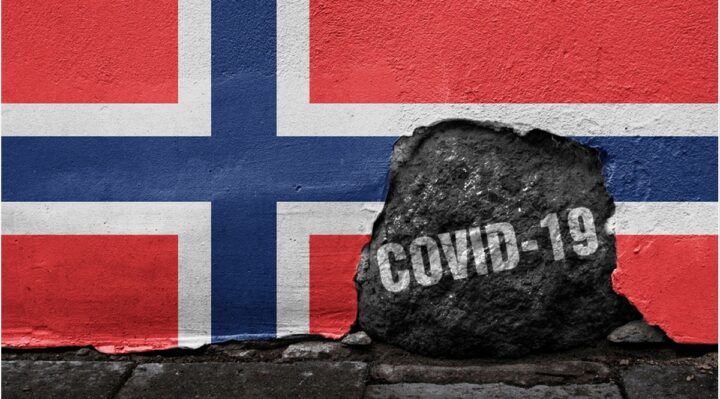The national action level is back to yellow for lower and upper secondary schools with effect from Wednesday 20 January. Municipalities with a high infection rate should consider whether to maintain the red level locally.
‘Our goal has always been to ensure that children and young people can live as normally as possible. I’m therefore pleased that we can now introduce the yellow level nationally in lower and upper secondary schools. At the same time, it is important to emphasise that more stringent local measures may be necessary in areas with widespread infection,’ says Minister of Education and Integration Guri Melby from the Liberal Party.

The red level was introduced for all lower and upper secondary schools in Norway with effect from 4 January, regardless of infection rates. This will be in force until 19 January. The Government is now announcing new measures from 20 January.
May take a few days to readjust
‘The yellow level is the level the schools are most familiar with, but I understand that it can be demanding to make the transition from red to yellow level. Some schools need time to plan this, and the municipalities must decide which level is right for them on the basis of the local infection situation. Nevertheless, I hope that it will make things easier for the schools now that they can operate with fewer restrictions in place,’ says Melby.
However, municipalities with a high infection rate should consider maintaining the red level in lower and upper secondary schools, and, if necessary, introducing the red level in kindergartens and primary schools as well.
The municipalities may keep the red level this week if they need to prepare for the transition to the yellow level or if they make a local decision to maintain the red level. The municipality’s infection control authorities decide which level to implement.
Municipalities are still not allowed to relax the rules in relation to the national level. This means that the municipalities cannot decide to introduce the green level.
Protecting children and young people as much as possible
‘When we decided to introduce the red level for all lower and upper secondary schools in Norway, we did so because we were concerned about the increased spread of infection throughout the country. The most recent figures could indicate that the infection curve is levelling out. That means that letting lower and upper secondary schools return to the yellow level nationally is the right thing to do,’ Melby says.
The overriding goal is the same for both the yellow and the red level, namely to limit the number of contacts for pupils and staff. At the yellow level, whole classes can be taught together in the same classroom. Teaching subjects where pupils from different classes mix is also permitted, but this should be limited as much as possible.
Pupils should sit at their regular places and/or be grouped according to which class they belong to. The staff can move between classes/cohorts, but should keep their distance whenever possible.
‘Children and young people with special needs must be able to attend school physically every day at both the red and the yellow level. This applies even if the school is closed. This means that someone will always be entitled to physically attend school,’ Melby emphasises.
Pupils under the age of 12 whose parents are essential workers shall also be able to attend school and kindergarten.
Infection control measures must not be more stringent than necessary
The local infection control authorities decide the action level for schools and kindergartens, but cannot lower the level when a yellow level is adopted nationally in accordance with the traffic light model. Infection control measures must be considered necessary and proportionate to the current infection control situation.
The Norwegian Institute of Public Health (FHI) has prepared the criteria for assessment, and some of the important criteria are the infection rate in the general population and in the age group in question, in addition to knowledge about whether the infection is transmitted in kindergartens or at schools.
Facts about infection control measures in schools and kindergartens
- From and including Wednesday 20 January, the national action level pursuant to the traffic light model will be lowered to the yellow level. The authorities are no longer advising against local sports and leisure activities for children and young people. However, matches, cups, competitions etc. must be postponed.
- The red level was introduced for all lower and upper secondary schools in Norway with effect from 4 January. Municipalities with high infection rates were also asked to consider implementing the red level for primary schools and kindergartens.
- From 20 January, the yellow level again applies to all schools and kindergartens at the national level. Municipalities with high infection rates must still consider whether to implement the red level for local schools and kindergartens.
- The municipalities may keep the red level this week if they need to prepare for the transition to the yellow level or if they make a local decision to maintain the red level.
- The Government’s goal is to keep the infection rate down and to protect children and young people as much as possible against invasive measures.
- The national action level for kindergartens and primary schools is still yellow, as it has been since the traffic light model was introduced.
- Children and young people with special needs must be able to attend school physically every day at both the red and the yellow level. This applies even if the school is closed.
